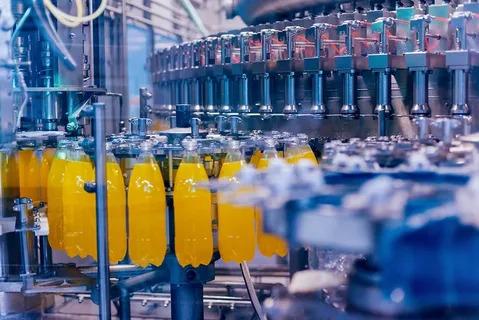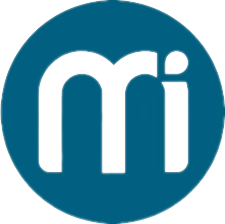How Food Processors Are Modernizing Water Treatment With Low-Cost Tech?

Introduction
Water is the backbone of the food and beverage industry. From cleaning raw ingredients to ensuring beverages taste just right, every step of the process depends on high-quality water. But for decades, managing water treatment was seen as expensive and complex. Today, things are changing rapidly. Thanks to new, affordable technologies, food processors can now modernize their systems without breaking the bank.
This shift is not just about saving money—it’s about efficiency, safety, and sustainability. In this article, we’ll explore how food processors are rethinking water management with cost-effective tools, why it matters, and what it means for the future of the industry.
Why Modern Water Treatment Matters in Food and Beverage
The Water Treatment Food and Beverage Industry has always been highly regulated. Governments and global health agencies enforce strict standards to ensure the water used in production is free from harmful contaminants. Poor water treatment can lead to product recalls, brand damage, or worse—serious health risks for consumers.
Beyond compliance, water quality also affects taste, texture, and shelf life. For instance, beverage manufacturers rely on water purity to create consistent flavors. Bakeries depend on the right mineral balance for dough fermentation. Even small changes in water chemistry can throw off entire product lines.
This is why modernization has become a priority. Food processors need solutions that not only meet regulations but also reduce costs and improve reliability.
The Shift Toward Affordable Technology
Moving Away from Traditional Systems
In the past, water treatment systems were massive, expensive, and energy-intensive. They often required constant supervision and costly maintenance. Smaller food processors found these systems difficult to afford, leaving them at a disadvantage compared to larger corporations.
Now, with innovations in low-cost tech, even mid-sized and small businesses can access efficient systems tailored to their needs.

Affordable Innovation in Action
Some examples of budget-friendly yet powerful solutions include:
-
Membrane filtration systems: These compact devices filter out impurities without consuming excessive energy.
-
Smart sensors: Low-cost IoT sensors now monitor water quality in real time, cutting down on manual testing.
-
UV disinfection: A chemical-free method to kill harmful microorganisms without expensive chemicals.
-
Automated dosing systems: Machines that add the exact amount of treatment chemicals, reducing waste and cost.
These technologies allow companies to maintain compliance, cut overhead, and operate more sustainably.
Key Areas of Modernization
1. Real-Time Monitoring with Smart Sensors
Smart sensors have become one of the most significant breakthroughs. Instead of relying on occasional lab tests, food processors can now see water quality data instantly. pH levels, turbidity, and temperature can be tracked on dashboards accessible from laptops or even smartphones.
This proactive approach means problems are identified early, avoiding costly downtime or contamination.
2. Low-Energy Filtration Systems
Traditional filtration often consumed enormous amounts of electricity. Today’s modern systems use advanced membranes that require less energy and maintenance. They are modular, allowing businesses to scale as production grows, without investing in oversized equipment upfront.
3. Sustainable Disinfection Practices
Many food processors are moving away from chlorine-based disinfectants. UV light and ozone treatment are gaining traction because they are effective, safe, and leave no chemical residue. Best of all, these solutions are affordable and increasingly accessible.
4. Automation and AI Integration
Automation plays a big role in cost reduction. AI-driven systems can predict water usage patterns, optimize energy consumption, and automatically adjust treatment levels. These systems reduce the need for human oversight while ensuring higher accuracy.
Benefits of Low-Cost Modernization
Improved Compliance and Safety
Affordable technologies do not compromise safety. On the contrary, modern tools often exceed regulatory standards by offering more consistent and reliable results.
Cost Savings
Reduced energy use, minimal waste, and automated systems all contribute to lower operational costs. Businesses no longer need to invest millions to meet international standards.
Environmental Sustainability
Sustainability is no longer optional in the global food and beverage industry. Affordable systems often double as eco-friendly solutions, cutting water waste and reducing carbon footprints.
Accessibility for Smaller Players
Perhaps the most important outcome is that modernization is no longer limited to big corporations. Local and regional food processors can now compete on a global scale with affordable, high-performance water treatment systems.
Case Studies: Affordable Tech in Action
Small-Scale Dairy Processor
A dairy company in East Africa integrated a low-cost membrane filtration system combined with UV disinfection. This setup drastically reduced bacterial contamination, extended product shelf life, and improved export readiness—all with minimal investment compared to traditional systems.
Beverage Manufacturer in Asia
A mid-sized beverage company installed IoT-based water sensors across its processing plant. Real-time data enabled them to cut water waste by 30% and energy costs by 20%, proving that affordability and efficiency go hand-in-hand.
The Future of Water Treatment in Food Processing
The Role of Digital Twins
Emerging technologies like digital twins—virtual models of physical systems—are expected to play a big role in predictive water management. Food processors will simulate different treatment scenarios before applying them in real life, reducing risk and cost.
Growing Focus on Circular Water Systems
Circular systems that recycle and reuse water within the plant are becoming more popular. These systems, once considered too costly, are now viable thanks to modular, low-cost treatment tech.
Industry Collaboration
The Water Treatment Food and Beverage Industry is also seeing more collaborations between tech developers, governments, and food companies. Shared knowledge and cost-sharing models make modern water treatment more accessible than ever.
Conclusion
Modernizing water treatment is no longer an expensive dream for food processors—it’s a practical reality. With low-cost technologies like smart sensors, UV disinfection, and automated systems, businesses of all sizes can achieve high standards of safety, efficiency, and sustainability.
These innovations are helping food companies not just meet compliance requirements but also build stronger, more resilient operations. As affordable solutions continue to evolve, the future of water treatment looks brighter, more accessible, and more sustainable than ever.
- Art
- Causes
- Crafts
- Dance
- Drinks
- Film
- Fitness
- Food
- Games
- Gardening
- Health
- Home
- Literature
- Music
- Networking
- Other
- Party
- Religion
- Shopping
- Sports
- Theater
- Wellness


